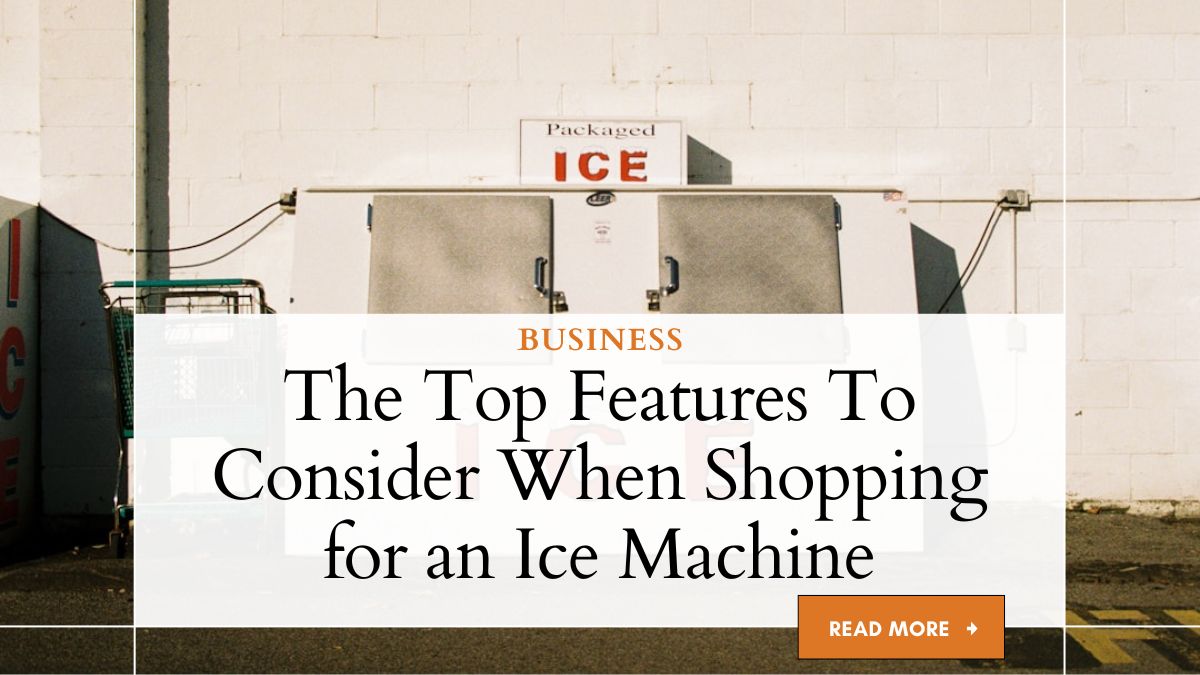
Whether you’re opening a new restaurant or updating your current facilities, the right ice machine can be a critical component of your business operations. It can impact everything from the quality of drinks to the efficiency of service.
Understanding the various elements, such as capacity, ice types, production rate, installation, and energy efficiency is crucial to making an informed purchase that serves your needs effectively.
In this article, we’ll dive into what you should look for in an ice machine to optimize your business.
Also, you can able to know,
Understanding Ice Machine Capacity for Your Business Needs
When choosing an ice machine, prioritizing capacity is crucial. Capacity, typically measured in pounds of ice produced within 24 hours, should match your peak demand with a slight buffer for unexpected spikes. Consider factors like the type of establishment—bars and restaurants often require larger capacities than cafes or offices.
Be cautious of excess capacity leading to wasted resources. Understanding your daily operations, including peak times and seasonal variations, is essential for accurate capacity assessment. Modular systems offer scalability for growing businesses. For reliable units, consider exploring options such as a Vogt ice machine for sale to match your operational needs efficiently.
Comprehending the Different Types of Ice and Their Uses
The choice of ice produced by an ice machine goes beyond appearance, directly impacting functionality and suitability for various purposes. Full-cube ice, favored in cocktail bars, melts slowly, making it ideal for drinks that need to retain their integrity over time. Nugget ice, known for its chewability, is perfect for soft drinks and healthcare settings.
Consider the shape and size of ice that complements your service offerings. Restaurants emphasizing presentation may opt for gourmet ice to enhance the visual appeal of drinks. Each type of ice excels in specific use cases, guiding your selection.
Think about how ice interacts with beverages. Soft ice blends seamlessly in mixed drinks, while slow-melting cubes are ideal for preserving the integrity of high-end spirits. Maintenance needs also vary with ice type. Flake ice machines, common in seafood display cases, may require more frequent cleaning due to their design. Factor in the labor and time for maintenance when choosing ice shape and size.
Evaluating the Ice Production Rate for Efficiency
Consider your business’s ice-making needs by assessing customer flow throughout the day. Determine if a high production rate is necessary to meet demand during peak times while avoiding service slowdowns. A faster production rate ensures a steady supply of ice during busy periods but may lead to energy inefficiency and overproduction during slower periods.
Balance the production rate with energy usage to optimize efficiency and conservation. Aim for a rate that ensures customer satisfaction and uninterrupted service without unnecessary waste.
Considering the Installation Process and Space Requirements

When choosing an ice machine, consider the installation process. Some units need specific fittings like water lines and electrical outlets, which may not be readily available. Space constraints are crucial. Know your available space and how a new machine will affect workflow. A bulky machine can disrupt efficiency if not accommodated properly.
Location matters. Place the ice machine close to the serving area for convenience, but ensure it maintains sanitary conditions and avoids cross-contamination. Ventilation is key. Ice machines generate heat, so proper ventilation prevents overheating and ensures efficient operation, avoiding maintenance issues and extending the machine’s lifespan.
Assessing the Energy Efficiency and Operational Costs of Ice Machines
Efficiency plays a crucial role in the operational costs of ice machines. Opting for energy-efficient models not only reduces electricity consumption but also minimizes environmental impact. Look for ENERGY STAR-certified machines for further eco-friendly and cost-effective options.
Consider water usage and potential costs, including filtration systems. Factor in maintenance schedules and associated expenses, prioritizing models with self-cleaning features or accessible components for reduced service costs. Choosing a resource-efficient machine benefits both your bottom line and the environment.
Don’t miss: The Best Businesses to Become a Millionaire
Altogether, a thorough evaluation of ice machine features is crucial for selecting the right unit to enhance your business operations. Assessing capacity, ice type, production rate, installation, and operational costs ensures that your investment aligns with your requirements and provides dependable service over time.












